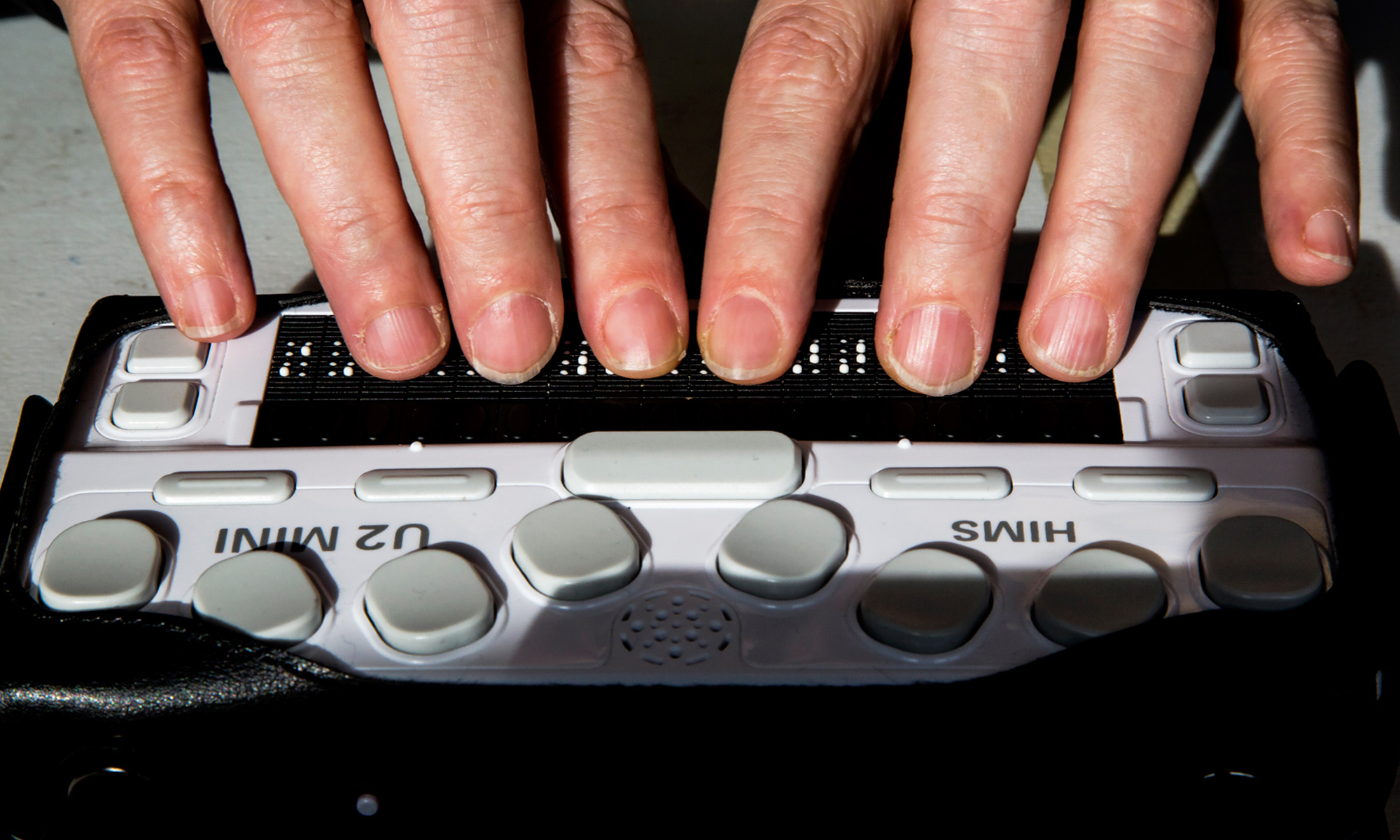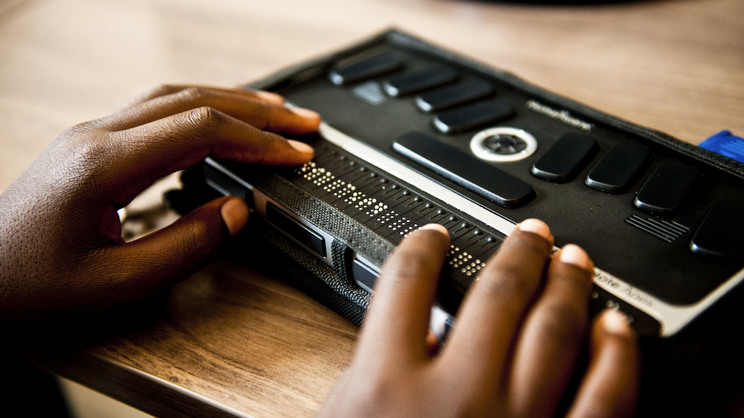Empowering Independence With Assistive Technology for the Blind
The integration of assistive technology into the lives of people with aesthetic problems represents a significant improvement in advertising self-reliance and self-sufficiency. From innovative display viewers to innovative wise walking canes, these devices not just improve day-to-day navigating and interaction yet also equip individuals to involve meaningfully in various elements of life. As we discover the myriad benefits and real-world applications of these technologies, it comes to be critical to take a look at the hidden elements that add to their effectiveness and the potential for future advancements in this essential field.
Introduction of Assistive Innovation

The advancement of assistive modern technology is grounded in principles of inclusivity and empowerment. Advancements in software program, hardware, and sensory improvements give customers with alternatives customized to their certain needs. From screen viewers that convert message to speech, to tactile gadgets that communicate information with touch, these tools transform the method people engage with their surroundings.
In addition to sensible applications, assistive modern technology promotes greater social incorporation and participation in various markets, including education and learning and employment (Braille displays and notetakers). As research and growth proceed to evolve, the potential for assistive technology to better enhance the lives of visually damaged people continues to be promising, leading the way for a much more equitable society where everybody can prosper
Sorts Of Assistive Gadgets
A variety of assistive tools have actually arised to sustain individuals with aesthetic impairments, each created to satisfy details requirements and boost daily functioning. These tools range from low-tech services to state-of-the-art technologies, providing varied options for customers.
Low-tech tools consist of magnifiers and large-print products that assist in analysis and writing. Braille tools, such as Braille stylus pens and slates, enable tactile analysis and communication. Orientation and flexibility help, like white walking canes, help individuals navigate their environment safely.
On the higher end of the spectrum, digital magnification systems and display viewers use considerable assistance. Electronic magnifiers enable individuals to enlarge text and pictures on displays, while screen readers convert digital material right into synthesized speech, facilitating accessibility to information on computer systems and smartphones.
Mobile phone applications also play a vital function, providing attributes like message acknowledgment and navigation assistance. Wearable technology, such as wise glasses equipped with enhanced reality, is arising as an appealing tool to improve situational awareness.
Benefits of Assistive Modern Technology
The assimilation of assistive technology dramatically boosts the lifestyle for people with aesthetic problems. These innovations empower customers by promoting independence, allowing them to navigate their settings extra efficiently and carry out day-to-day jobs with greater simplicity. Display visitors and zoom software enable people to accessibility digital details, cultivating academic and specialist possibilities that might have formerly been out of reach.
In addition, assistive tools such as smart walking canes and GPS applications give real-time navigating support, boosting mobility and security. This raised freedom not only enhances self-esteem but likewise urges social involvement, allowing individuals to take part even more fully in their areas.
Assistive innovation additionally assists in interaction, aiding individuals get in see post touch with others with voice recognition and text-to-speech applications. This capability is crucial for maintaining relationships and accessing crucial information.
In addition, the personalization options offered with numerous assistive innovations make certain that users can tailor tools to their certain needs, additionally enhancing usability and performance. Overall, the benefits of assistive technology for people with aesthetic problems are profound, promoting an extra comprehensive society where everyone can pursue their objectives and ambitions.
Case Studies and Success Stories
Highlighting the transformative impact of assistive modern technology, numerous case researches illustrate exactly how individuals with aesthetic problems have effectively incorporated these devices into their daily lives. One engaging example entails an university student who used screen analysis software program to navigate on-line resources and scholastic products successfully. This innovation not only facilitated her education and learning but additionally enhanced her confidence in participating in discussions and team jobs.
One more study includes an expert who utilizes a smartphone application designed for navigation and things recognition. By utilizing this application, he has regained autonomy in both his personal and work environments, allowing him to commute independently and engage with coworkers a lot more properly.
In addition, a retired person shared her he has a good point experience with braille e-readers, which enabled her to access a large selection of literary works and stay gotten in touch with her community with book clubs.
These success stories underscore the critical function of assistive modern technology in cultivating self-reliance, boosting lifestyle, and advertising social assimilation for people with aesthetic impairments (Voice-activated assistive devices). By embracing these ingenious devices, customers can get rid of obstacles and seize opportunities that add to their professional and individual satisfaction

Future Patterns in Assistive Modern Technology
Development in assistive technology is poised to redefine the landscape of support for individuals with aesthetic impairments. Emerging fads highlight the assimilation of expert system (AI) and device knowing, which boost the performance of devices that help with navigating and details accessibility. As an example, AI-driven applications are now with the ability of interpreting visual information in real-time, enabling individuals to engage with their environment a lot more individually.
In addition, the advancement of wearable technology is progressing quickly. Smart glasses equipped with enhanced reality (AR) can offer audio summaries of surroundings, changing exactly how individuals communicate with public spaces. These gadgets not just promote freedom however likewise foster social inclusion.
Additionally, the Net of Points (IoT) is making homes smarter, permitting smooth connectivity between day-to-day home appliances and assistive gadgets. This connectivity empowers users by allowing voice-activated controls and automated feedbacks customized to private requirements.
Conclusion
In final thought, assistive modern technology plays a crucial duty in empowering individuals with aesthetic impairments by enhancing their self-reliance and involvement with their surroundings. The varied reference series of applications and devices readily available not only assists in navigating and communication however additionally advertises social assimilation and possibilities for individual and expert development. As innovations continue in this area, the possibility for improving the high quality of life for those with aesthetic disabilities will expand, fostering greater freedom and empowerment.
%20(1).webp)